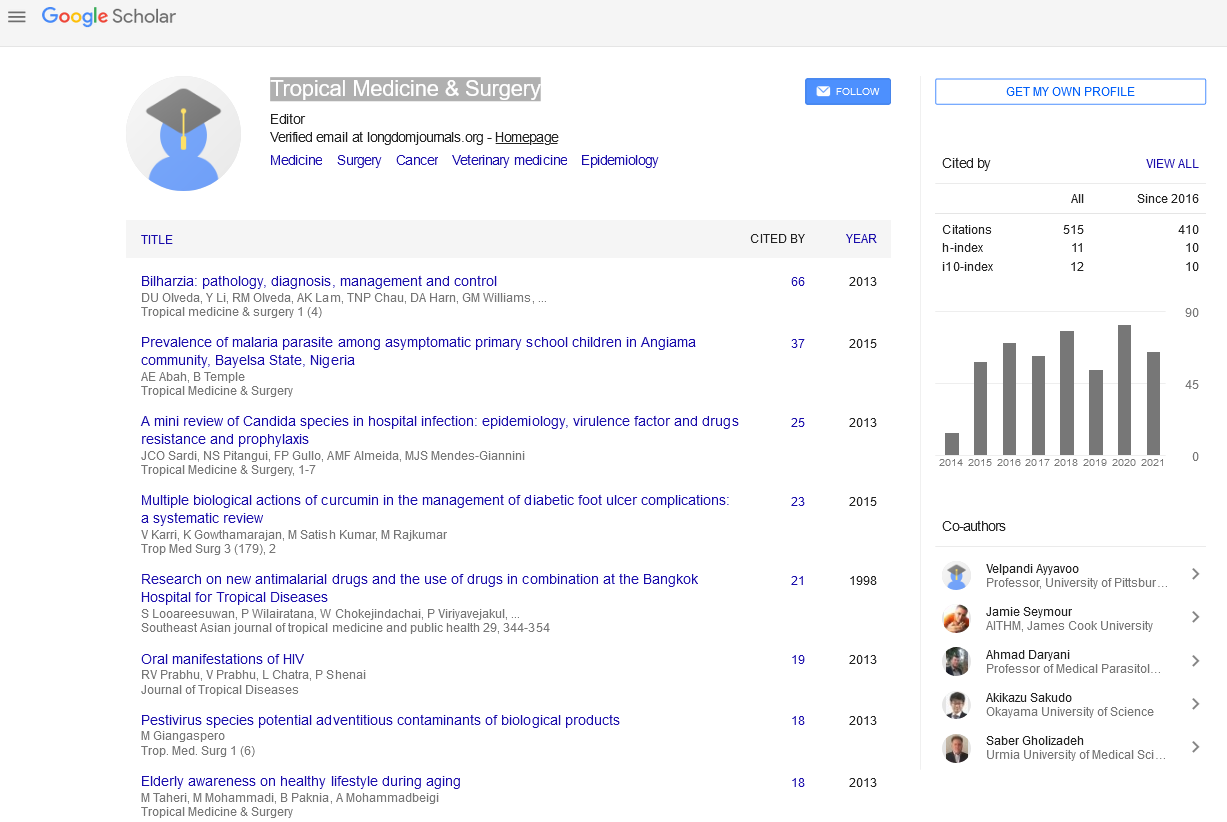PMC/PubMed Indexed Articles
Indexed In
- Open J Gate
- Academic Keys
- RefSeek
- Hamdard University
- EBSCO A-Z
- OCLC- WorldCat
- Publons
- Euro Pub
- Google Scholar
Useful Links
Share This Page
Journal Flyer

Open Access Journals
- Agri and Aquaculture
- Biochemistry
- Bioinformatics & Systems Biology
- Business & Management
- Chemistry
- Clinical Sciences
- Engineering
- Food & Nutrition
- General Science
- Genetics & Molecular Biology
- Immunology & Microbiology
- Medical Sciences
- Neuroscience & Psychology
- Nursing & Health Care
- Pharmaceutical Sciences
Abstract
Screening and Identification of Extended Spectrum β-lactamase (ESBL) Pathogens in Urine Sample of UTI Patient’s
Jasmine Subashini and Krishnan Kannabiran
Extended Spectrum β-Lactamases (ESBL) exhibit most important resistant mechanism challenging broad spectrum of antibiotics, ESBL’s hamper current treatment strategies limiting therapeutic options. Hence, it is important to screen those organisms using standard techniques to fix the spread and outcome consequences. Aim and objective of our perspective cohort study was to isolate and to identify the resistant ESBL pathogens consecutive ESBL positive strains were recovered by Disc Diffusion Test (DDT) and 90% of the isolates were E. coli and Klebsiella pneumoniae. Further, antibiotic susceptibility assay against third line cephalosporins like cefotaxime (30 g), cefotaxime/clavulanic acid (30 μg/10 μg), ceftazidime (30 μg), ceftazidime/clavulanic acid (30 μg/10 μg), ampicillin (30 μg) and amikacin (30 μg) were tested by CLSI guidelines from NCCLS (National Committee for Clinical Laboratory Standards). Minimum Inhibitory Concentration (MIC) was determined against E-test ESBL strips containing cefotaxime (CT), cefotoxime/clavulanate (CTL), ceftazidime (TZ), ceftazidime/Clavulanate (TZL). E. coli (ATCC 25922) was used as negative control and (ATCC 700603) as a positive control strain. Controls were satisfactory in comparison to standard chart. Our study results unveil a very high spread of such super bugs in health centers. The empiric use of 3rd generation cephalosporins should be curtailed, as it is associated with increased risk of ESBL production. The necessity for continued antimicrobial resistance surveillance to prevent higher degree of resistance is justified in the light of our findings

